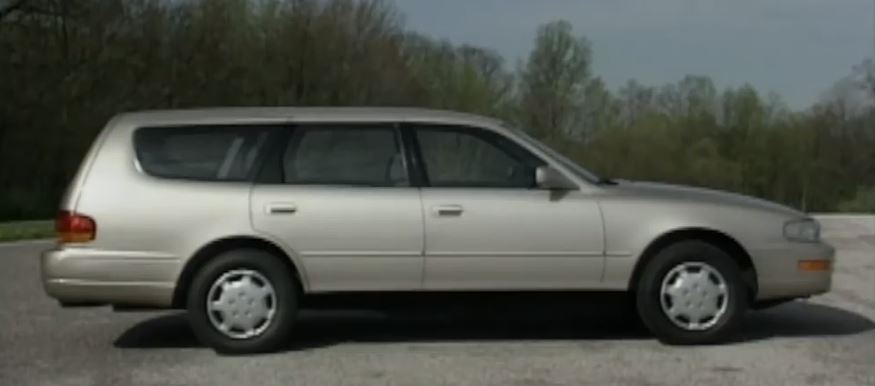Test Drives

Published on December 3rd, 2019 |
by BajaBusta
1992 Toyota Camry Wagon Test Drive


Bigger isn’t always better, but the physical expansion of Toyota’s Camry lineup seemed to be one instance where a size increase was successful right across the board.
Although the Camry wasn’t conceived as a sport wagon, there was enough power to make it more than capable in traffic and an effortless open road cruiser, even with family size loads on board. Similarly, the supple suspension system spayed up just about any kind of road surface irregularities before it found its way to the roomy, comfy passenger cabin.
Roominess and family size loads, of course, were what the Camry wagon was all about. Options for the new wagon included a rear facing third row of sears, expanding passenger capacity to seven. And even though the wagon was just 1.6-in longer than the sedan, it enclosed a whopping 140.8 cu. ft. of interior volume with the second and third seats folded flat. Folding just the third seat flat yielded 40.8 cu. ft. of cargo volume.
Camry Wagon prices started at $16,898 for the basic Deluxe model, $20,528 for the V6 LE. Like their sedan counterparts, the Camry Wagons were built at Toyota’s Georgetown, Kentucky, plant, with sufficient local content to qualify as domestic cars.
1991 Honda Accord Wagon Test Drive
1992 Toyota Camry Test Drive
1993 Toyota Camry SE Test Drive
2000 Saturn L-Series Test Drive
Tags: 1992, 1992 Toyota Camry Wagon, Camry, Camry Wagon, consumer reports, how reliable are, how reliable is, jd power, Motorweek, Review, road test, Roadtest, Station Wagon, test drive, Testdrive, Toyota, Toyota Camry Wagon






Pingback: » 1992 Toyota Camry Test Drive